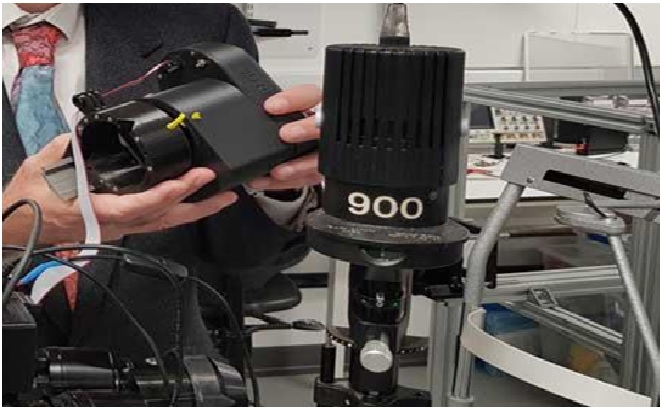New Low-Cost 3D Images to Detect Eye Diseases
Researchers from the University of Strathclyde, developed the device, that captures 3D images of the retina, the back of the eye and cornea, and can be added at low cost to a slit lamp, a device commonly used by optometrists.

Figure 1: The device captures 3D images of the retina.
Figure 1 shows thatPatients with conditions such as glaucoma, the third most common cause of visual impairment worldwide, with an estimated 7.7 million people affected, are often diagnosed by highly-trained specialists, who look at photos and give a subjective opinion on the 3D structure of the back of the eye. [1]
There are existing instruments for 3D imaging, including Optical Coherence Tomography technology – the machines can cost up to £100,000, often making them too expensive for large-scale population use, especially in low-income countries.The new technology is a simple and inexpensive add-on to a standard lamp, and can extend 3D eye imaging to all settings where optometrists are present.
The technology can also be used to image the front of the eye, which is important for cornea transplant patients as many machines can’t measure the edge of the cornea.The device has been developed by Dr Mario Giardini, Dr Ian Coghill, and Kirsty Jordan, at the Department of Biomedical Engineering of the University of Strathclyde. [2]
“The technology has the potential to revolutionize the screening and follow-up within the community of conditions such as glaucoma, as any optometrist, anywhere in the world, could afford it. This work makes eye diagnostics more accessible, reducing inequalities.”
Dr Iain Livingstone, consultant ophthalmologist at NHS Forth Valley, said: “So much of what we do as eye doctors depends on seeing things in 3D. While photographs can be helpful, this innovation uses visible light to re-create a high-fidelity 3D representation of eye structures, allowing precise measurements to be taken in a completely new way, piggybacking on the method of examination we already do routinely.
“It’s a crucial addition to the way we interpret information, harnessing digital to glean so much more from a slit lamp exam, with potential reach far beyond the hospital toward community optometry, bringing nuanced measuring tools closer to home for patients.”The researchers also hope it can eventually be used to detect eye cancer and replace ocular ultrasound devices.
References:
- https://ophthalmologybreakingnews.com/pioneering-low-cost-device-could-detect-eye-diseases-with-3d-imaging-
- https://www.strath.ac.uk/whystrathclyde/news/2022/pioneeringdevicecantake3dimagestodetecteyediseases/
- https://eandt.theiet.org/content/articles/2022/07/low-cost-device-takes-3d-images-to-detect-eye-diseases/
Cite this article:
Sri Vasagi K (2022), New Low-Cost 3D Images to Detect Eye Diseases, Anatechmaz, pp. 361

